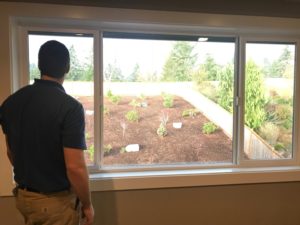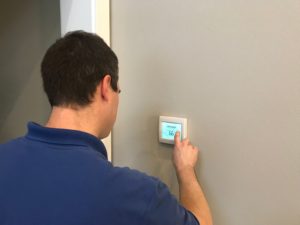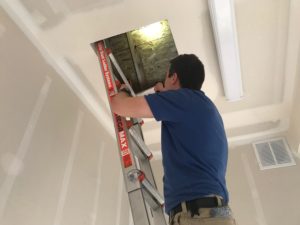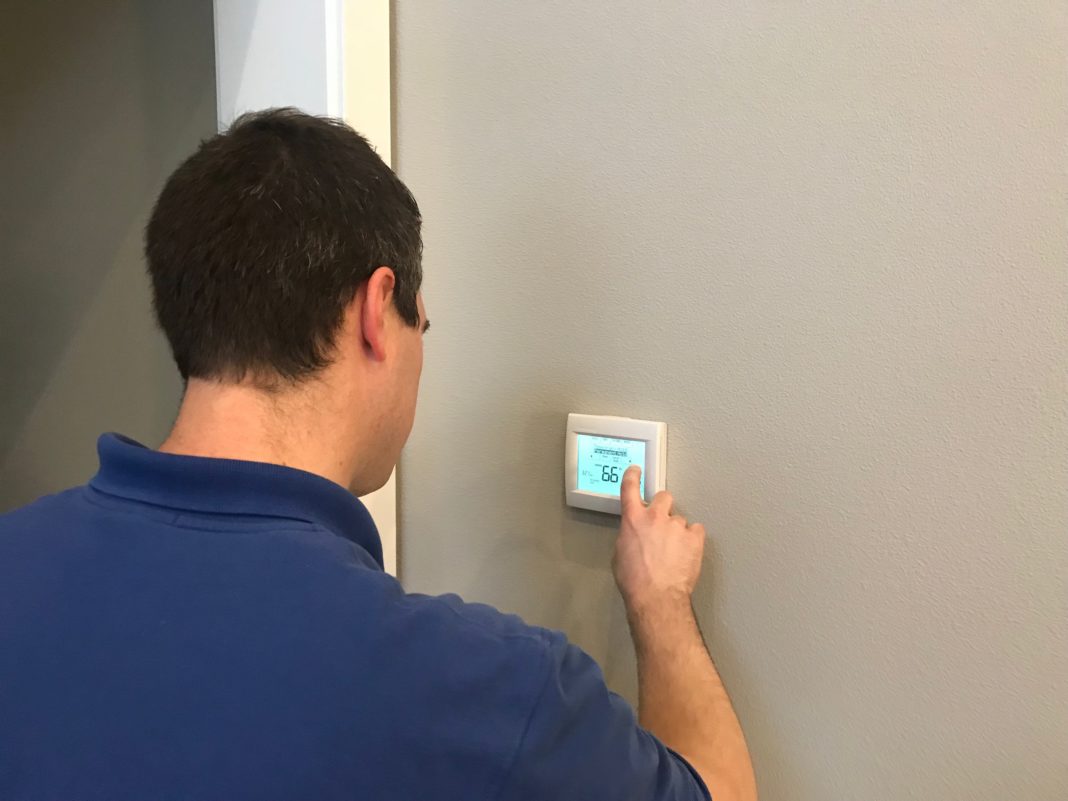Though the official start of winter is still weeks away, lower temperatures have been creeping into the forecast. Now is the time to prepare your home for cold winter nights. Winterizing your home can save you money, increase your home’s value, and make it more comfortable during the chilly winter months. Dwayne Boggs of Boggs Inspection Services shared this home winterizing list to help you get started.

Install Storm Windows
If your home is older, it might have single pane windows. “Single pane windows are notoriously energy inefficient,” says Dwayne. Window replacements can increase a home’s energy efficiency, but they are expensive. If you aren’t ready to replace the window in your home, storm windows can be a less expensive option. Storm windows are extra windows that are placed on the interior or exterior of the home. By adding this additional window layer, drafts are sealed, providing an insulating barrier to cold air. Handy homeowners can install storm windows themselves, but even professional installation is much less expensive than window replacement.
If you already have storm windows, ensure you are maintaining them by cleaning in between the windows. Maintaining your storm windows is an essential step to reduce moisture in the space between the original window and the storm window, which can cause damage to the window frame.
Weather-Stripping
Weather-stripping around doors and windows is another layer of defense against the cold. It seals gaps around doors and windows, increasing energy efficiency, and is simple to install yourself. Weather-stripping is available in v-strip, felt, foam tape, and tubular stripping types. A door sweep is also a type of weather stripping that is useful for keeping warm air in when there is space below the door and above the frame.
V-strip is made from plastic or metal and is used along the sides of double hung or sliding windows and on the top and sides of doors. It is attached with adhesive or finishing nails, and because of its shape, it springs open to seal cracks and crevices where warm air can escape.
Felt is inexpensive and can be applied to a door or window sash with small nails or staples. It is not as durable, so it must be replaced more regularly, and should not be used where it will be exposed to a lot of moisture.
Foam tape is made from open or closed cell foam or rubber and comes with a sticky back. It is inexpensive, easy to install, and works great for irregular cracks. It is best used on the top and bottom of window sashes, and is easily cut to length to adhere where needed.
Tubular stripping is made from rubber, vinyl or silicone. It is a narrow sponge rubber or vinyl tubing that comes attached to wood or metal mounting strips. It can be used at the top or bottom of window sashes, along the bottom of a door or between the door and its jamb. Silicone types are often inserted into milled grooves.
Contrary to their name, door sweeps are not intended to sweep the floor. They should be installed so they come in contact with the bevel on the threshold, sealing the bottom of the door. They come in brush and silicone types.
If you have applied some or all of these weather-stripping measures to your home in the last several years, now is the time to check for routine wear and tear and replace any weather-stripping that is worn and has outlived its usefulness, Dwayne says.

Photo courtesy: Boggs Inspection Services
Check the Thermostat
Turning the heat down a few degrees, while everyone is asleep or away, can reduce energy costs significantly over time. A programmable thermostat can make this simple and effortless. Programmable thermostats can also be set to raise the temperature before you wake or return home, so the house is already comfortable when you are most active.
Insulate Pipes
Pipes on exterior walls should be insulated to prevent from freezing. When water freezes, it expands, which could crack or burst the pipe costing thousands of dollars of damage to the home. Pipe insulation can be tricky if the pipes are not exposed and is probably best left to a professional. Now is a good time to ensure faucets attached to the outside of your home are shut off completely. “Attaching an outdoor faucet cover is an inexpensive step to protect the faucet and pipe from freezing temperatures,” Dwayne adds.

Improve Attic Insulation
Warm air rises. If you attic is not properly insulated, your money is simply floating away. Adding insulation of the proper R-value for Thurston County, to bring it up to R38 to R60, will increase your homes energy efficiency, explains Dwayne. Even professional installation, which is more expensive than doing it yourself, still offers a great return on investment, saving you money and keeping you warm all winter long.
Furnace Maintenance and Ducts
If you haven’t made time to have your heating system inspected, it’s not too late. A properly maintained heating system runs more efficiently, saving you money through the cold months. Make sure to replace filters in line with your system’s recommendation. The service technician can also check your ductwork for leaks, which will reduce the efficiency of your system, Check out this ThurstonTalk article for other fall maintenance you may need to catch up on.
With a few simple steps, your home will by cozy all winter long. If you have questions about winterizing your home or would like to schedule a home inspection, call Boggs Inspection Services 360-480-9602 or visit the Boggs Inspection Services website.
Sponsored



















































